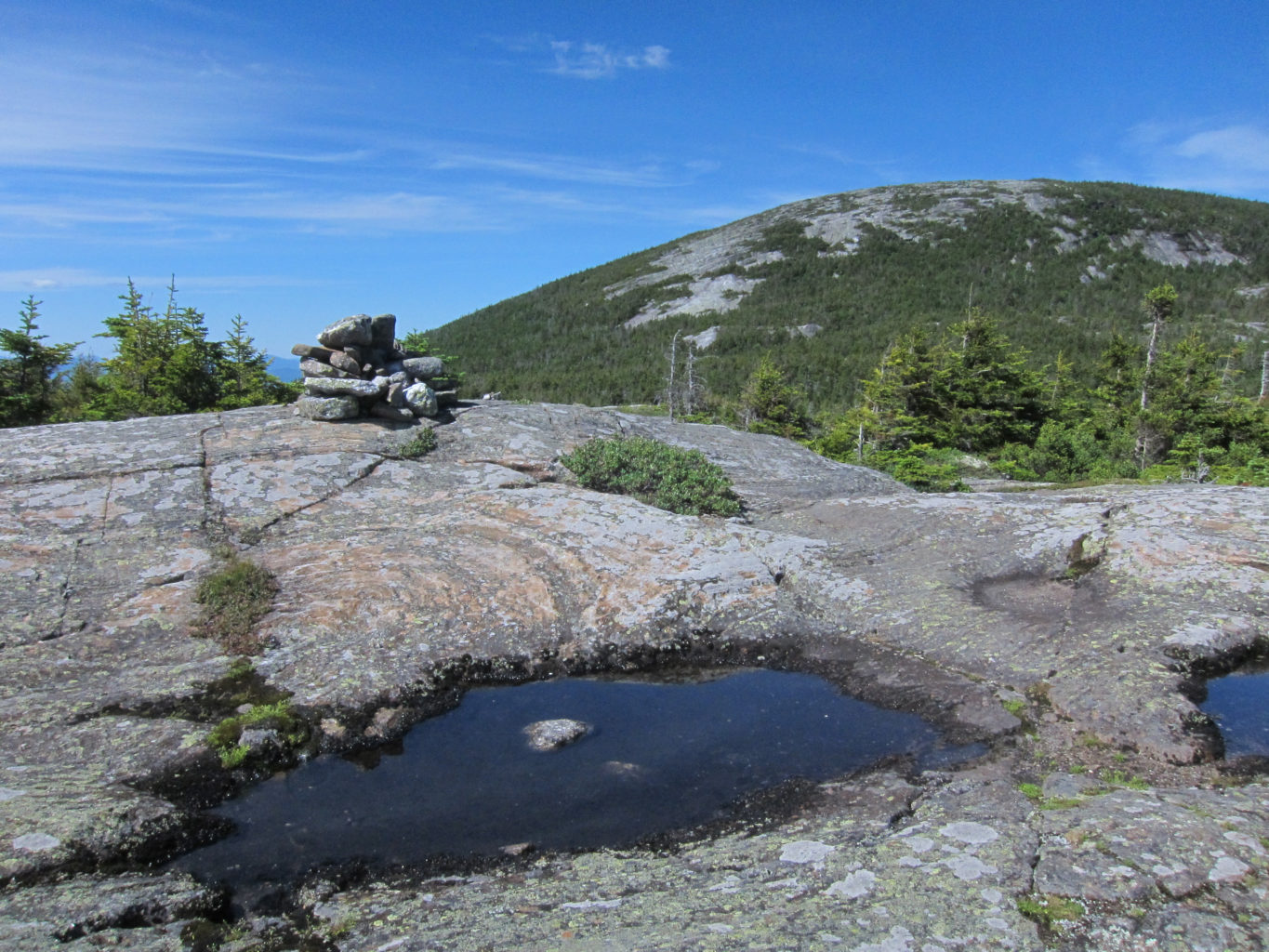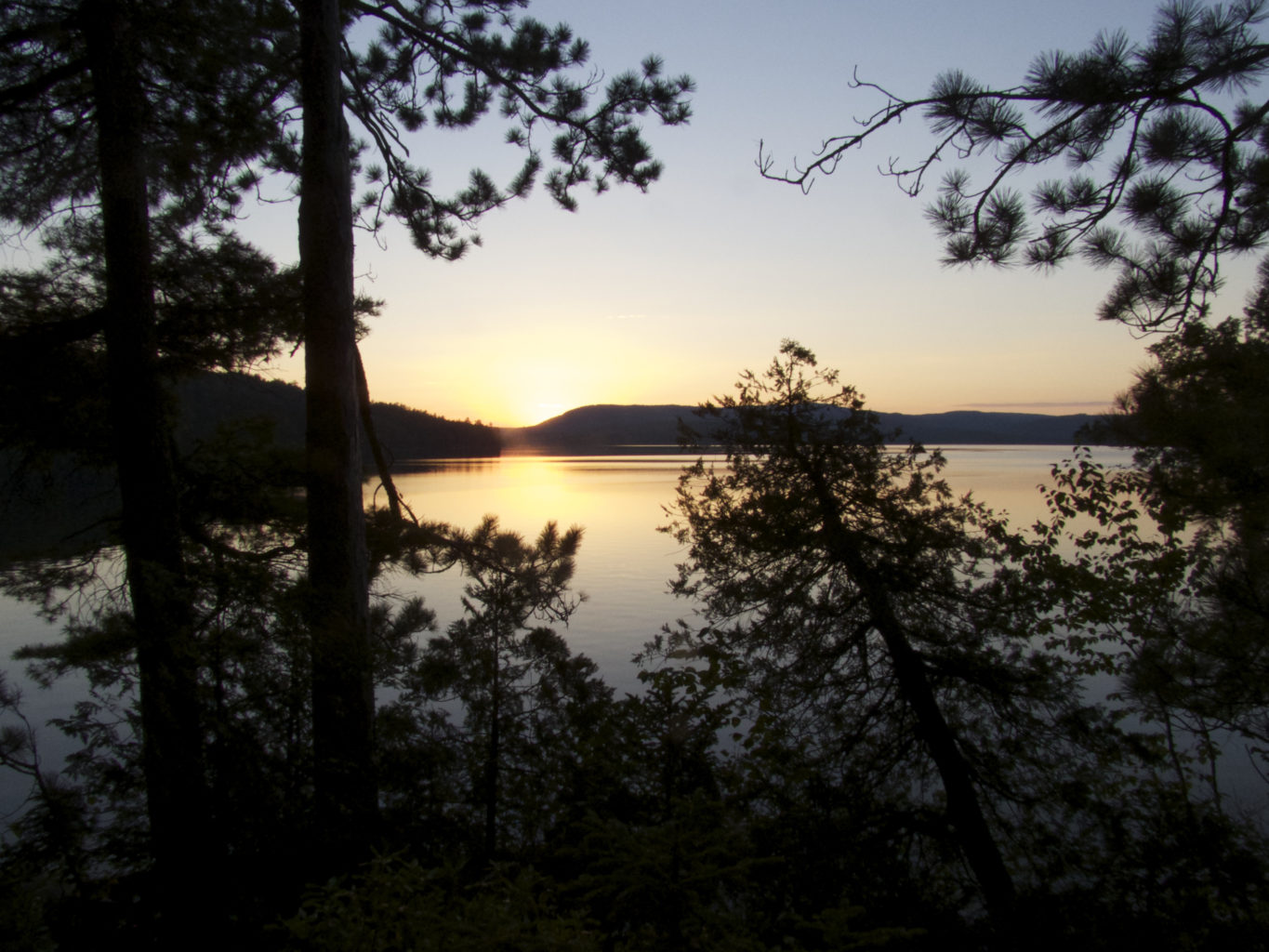
Bald Pate Mountain, part of the Mahoosuc Public Reserved Land Unit.
You could spend both ends of your vacation driving or flying to beautiful spots all over the country or the world. Or you could use those travel days to fit in yet more adventures on Maine’s Public Reserved Lands. These lands belong to us. They are must-see destinations for adventurers from Maine and travelers from all over the world.
This summer I was determined to check off several Maine trips I’ve long intended to do. At the beginning of these adventures I realized that I was on Public Reserved Lands. These lands belonged to me! I understood that as a Mainer I was very lucky to be able to take an easy drive to these places, unlike the visitors I met from Germany, France, British Columbia, Indiana, California, Iowa, North Carolina, and on and on.
My hiking checklist contained some well-known routes such as the Bigelow Range, the Mahoosucs and Grafton Notch. I noticed signs at the trailheads that these wild areas I have always assumed were protected are actually Public Reserved Lands. Alarmed at what I had been hearing about our governor’s proposal to dramatically increase the quantity of timber to be cut from these lands, I imagined these places shorn of their trees. I looked at the online guide to Public Reserved Lands and saw that, indeed, many of the places I’ve most enjoyed in Maine are part of the Public Reserved Land system. I’ve camped on great seaside cliffs on the Cutler Coast unit in Washington County. I’ve paddled past the Dead River unit on Flagstaff Lake for a stunning view south to the Bigelows. I’ve day-hiked up Tumbledown in Weld for its long views, lichen art on the granite slabs, and swimming pond at the summit. I’ve canoed the West Branch of the Penobscot out of Moosehead Lake to Chamberlain Lake, a wind-swept expanse that one can imagine looks as it did when Thoreau paddled by. The Moose River circle trip out of Jackman that my family has canoed a few times crossed a section of Public Reserved Lands. The Debsconeag Lakes canoe trip I do over and over is a chance to visit Nahmakanta Public Reserved Land unit, a lovely expanse of wild lakes, forest, and enormous boulders with magnificent views of Katahdin.

Nahmakanta Public Reserved Land
The map of Public Reserved Lands shows many natural areas I’ve yet to visit. It also helps me understand how important carefully managed Public Reserved Lands are to Maine’s outdoor economy. Until now, timber cutting on the lands has been measured and careful, generating revenue to manage the units while also furthering the legislatively mandated values of protecting wildlife habitat and recreation.
The music teacher from Iowa who section-hikes the Appalachian Trail for two weeks every year when classes end, the elderly German couple thrilled by wild lands, and the Mainer in basketball shoes trying out the trails with no itinerary probably had no idea why their hike on Old Speck Mountain was pristine. They probably didn’t know about the wisdom of the Legislature in setting the rules for the Public Reserved Lands to manage not for the short-term gain of timber cutting, but for the long-term benefits of preserving forests, waters, and vistas for all to enjoy. All Mainers own these lands, and all can reach at least one of the units by driving an hour. No need to spend days to get here like the Iowans and the Germans.
Now that I’ve traveled to many Public Reserved Lands, my backlog of units to visit has only gotten longer. How fortunate and wise we will be if we treat these places as treasures to protect for multiple values, and not just as timber farms.
—Karen Herold, NRCM Board member










Lots of BPL lands look great as long as you stay within the “beauty strip” that surrounds your trail or lakeshore.
In the Mahoosucs, for instance, you hike the Appalachian Trail where it is protected by an ecoreserve, so yes, it’s awesome. And Grafton Notch-Old Speck is a state park.
But the state legislature has capped the ecoreserve acreage on BPL lands at only 15%, and less than 6% of potential areas for timber harvest.
From your story it looks like you’ve already been to most of the good spots, though definitely check out Deboullie Ponds, another ecoreserve.
Otherwise, most BPL lands are roaded and logged, and while it is certified as sustainable, it isn’t remotely wild.
Thank you for this comment. You make good points.